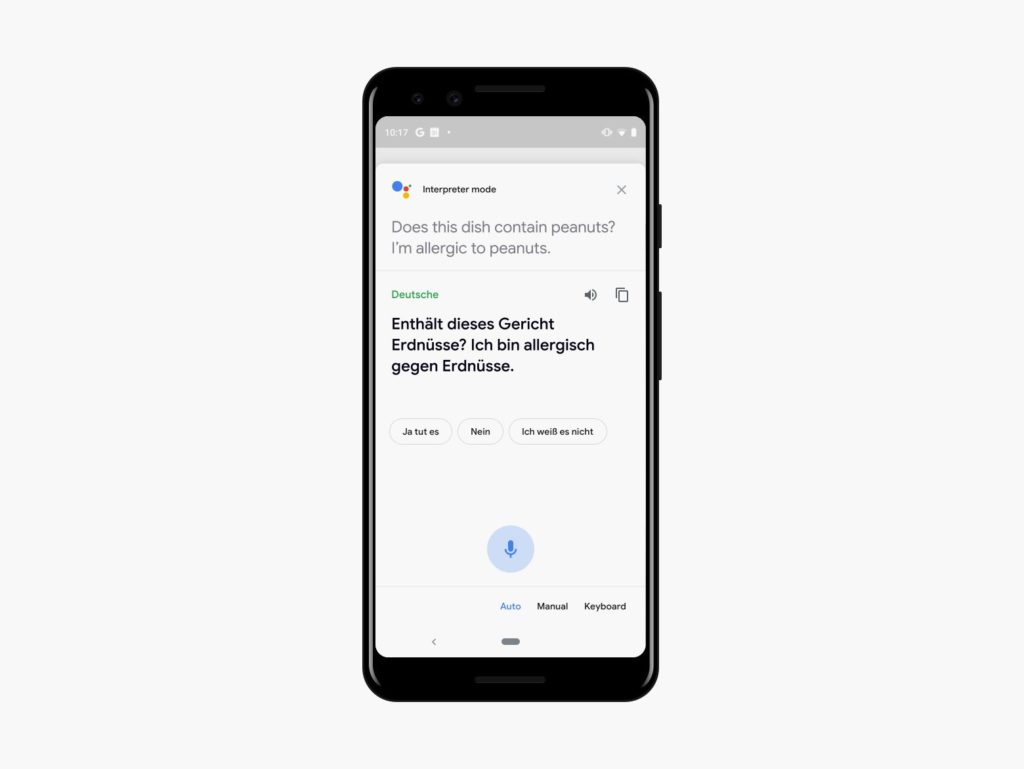Google Assistant Can Now Translate Languages on Your Phone
Interpreter Mode comes to iOS and Android, making it easier to converse somewhat seamlessly across language barriers…

When I hopped into a cab in Barcelona last year, my taxi driver began asking me questions—you know, small talk. But his phrasing was awkward because English wasn’t his native tongue. Cue a kludgy back and forth, with both of us having a hard time really understanding one another. That’s when I whipped out Google Translate, and his eyes lit up as my phone conveyed his questions better than I ever could. It wasn’t perfect, and he had to repeat himself a few times, but what flowed out was a proper conversation—one that wouldn’t have been so easily possible a decade ago.
Translation apps like Google Translate or Microsoft Translator are familiar to world travelers. Now, Google is making it possible to have spoken conversations across language barriers without needing to download an app at all. The company has updated Google Assistant so that it supports translating languages in real time.
It’s called Interpreter Mode in Google Assistant, and it isn’t new per se—the company demonstrated it almost a year ago, at CES 2019—but the feature was until now relegated to smart speakers and smart displays, like the Google Home and Nest Hub Max. With this update, it’s finally making its way to smartphones. You won’t need to download an app on Android because Assistant is baked into the operating system, but you will need to download the Google Assistant app if you have an iPhone.
Courtesy of Google
Just say, “Hey Google, be my [insert language of choice here] translator,” and point your phone at the person you’re talking to. Whatever they (or you) say will be translated, and it all happens as soon as someone begins talking. During a live demo in New York, where someone was speaking German, Assistant mistranslated once during a short conversation, but it got it the phrasing correct the second time after the speaker enunciated a little more clearly.
The whole experience isn’t speedy enough to sound like a normal conversation, and I can only imagine how much trickier things get when accents thicken, but you only have to wait for a second or two for the translation to come through.
Assistant will speak its translations aloud, but you can also opt to use the keyboard (and show the person your phone’s screen) if you’re in a quiet environment. The system will automatically choose the language you want to translate based on your location, though you can configure this manually too. Assistant is also powerful enough to offer up smart replies after translations, which are short phrases you can tap that the AI-powered software thinks might be natural follow-ups. If you need to translate text, Google Lens, which is already baked into Assistant on Android phones, can currently do this in real time using your phone’s camera.
Online Only
Google initially envisioned Interpreter Mode as a handy tool you’d use at hotel concierge desks with a Nest Home Mini sitting next to the service bell. The tech’s migration to phones makes it possible for anyone to take the feature out and about. Unfortunately, since the translation currently takes place in the cloud, it only works if you’re online. That differs from the Google Translate app, which lets you download a language so you can use the service offline to translate typed words and phrases—handy when you might be using a local SIM with limited data. Google told WIRED it’s exploring support for offline translations with Assistant’s Interpreter Mode.





